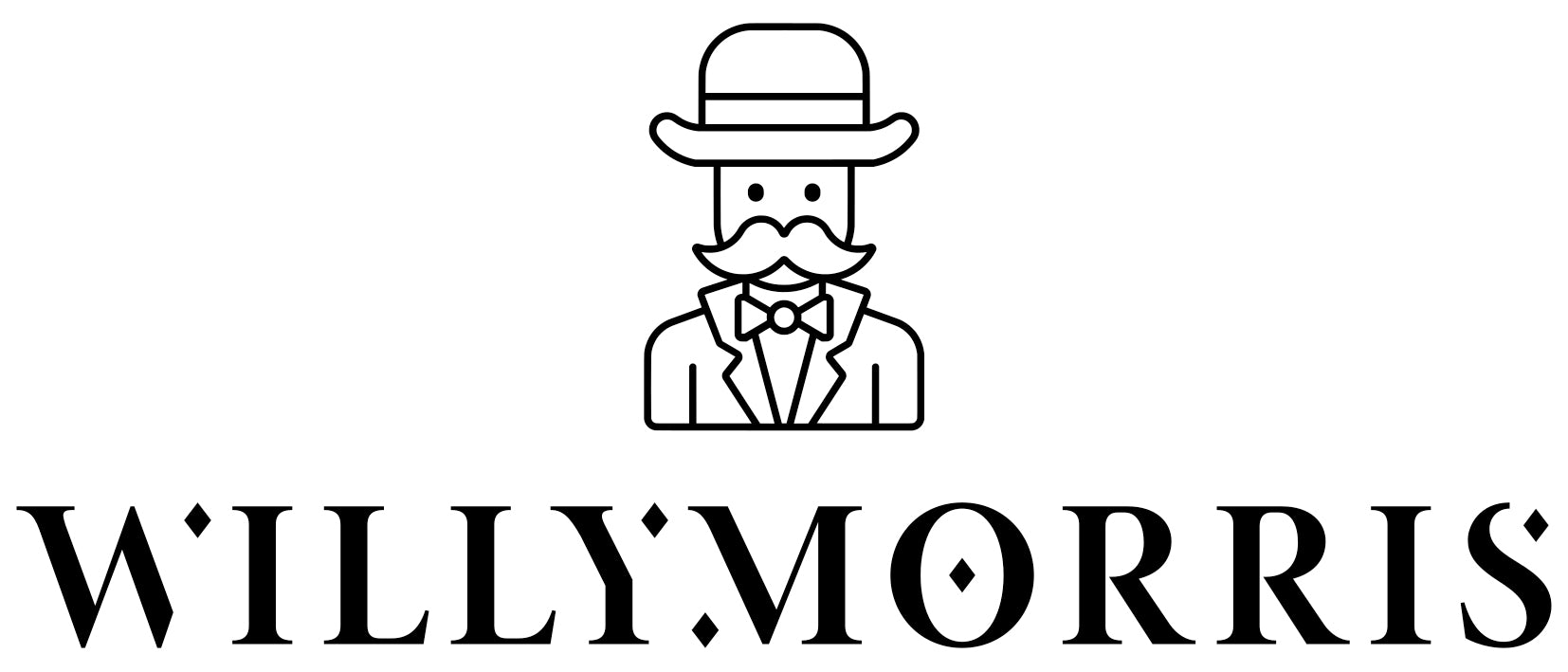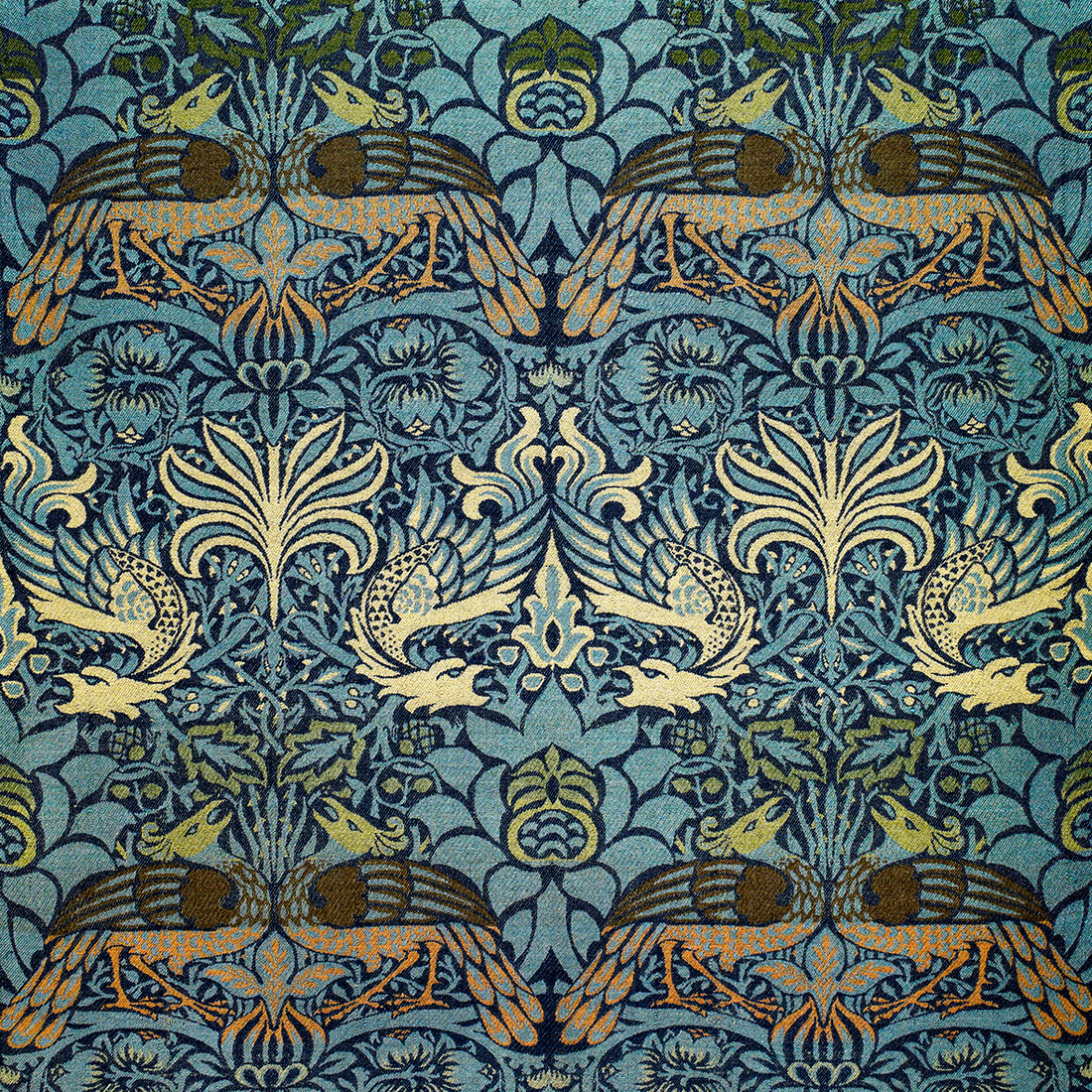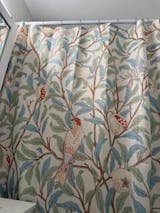William Morris's Exquisite Peacock and Dragon Pattern: A Closer Look at its Origins and Symbolism
Step into the enchanting world of William Morris, a visionary artist whose intricate designs continue to captivate and inspire. Among his many masterpieces, one pattern stands out in all its resplendent glory - the Peacock and Dragon. Just a glimpse at this mesmerising creation evokes a sense of wonderment and curiosity about its origins and hidden symbolism.
Join us as we embark on an intriguing journey through history, unraveling the mysteries behind this exquisite pattern that has bewitched art lovers for generations.
Prepare to be enthralled by tales of ancient legends, mythical creatures, and the enduring allure of Morris's artistic genius.
The Peacock and Dragon pattern, first released in 1875, is one of Morris’s most celebrated works. Its intricate design is composed of a vibrant array of colours and symbols that evoke a sense of grandeur and splendour. At the center of the pattern lies a magnificent peacock whose plumage radiates outwards in all directions, interspersed with dragons and other mystical creatures.
The symbolism behind this stunning artwork draws from many sources - from ancient mythology to classic literature to East Asian culture. Morris himself said that his inspiration came from the “richness of life” around him. He aimed to create something beautiful that also had deeper meaning - something that would bring joy and enlightenment to those who admired it.
The Peacock and Dragon pattern has long been revered for its timeless elegance and captivating beauty. But beyond its aesthetic appeal, there is much more to discover about this enigmatic design. By carefully examining its symbolism, we can gain insight into the mind of its creator - William Morris - as well as uncover hidden truths about our own lives and society at large.
Let us now explore further, unravelling the secrets behind this exquisite pattern . . .
Introduction to William Morris and His Work
William Morris was an English textile designer, poet, novelist, translator, and socialist activist associated with the British Arts and Crafts Movement. He was a major contributor to the revival of traditional British textile arts and methods of production. His designs are characterised by rich colours and bold patterns, often featuring nature motifs such as flowers, trees, and animals.
One of Morris's best-known design is probably his 'Peacock and Dragon' pattern, which was first printed in 1878. The design is based on a 13th-century Persian carpet in the collection of the Victoria and Albert Museum. Morris was fascinated by Oriental carpets and their history, and he incorporated many elements from them into his own work.
The peacock is a symbol of beauty, grace, and dignity in many cultures. In Christianity, it represents resurrection and eternal life. The dragon is a more ambiguous figure; it can represent both good and evil depending on the context. In this particular design, Morris may have been inspired by the story of St. George slaying the dragon, which was a popular subject in medieval art.
This pattern was extremely popular in its day and remains one of Morris's most iconic designs. It has been reproduced countless times over the years, and its bold colours and striking imagery continue to captivate modern audiences.
Morris was also a prolific writer, producing novels, short stories, and poetry. He became politically active in the 1880s and was an advocate for socialist causes. His writings reflect his views on social justice and equality. Morris was also a leading figure in the Arts and Crafts Movement, which sought to revive traditional craftsmanship in an age of industrialism.
Morris' legacy remains strong today; he is widely respected as one of the most influential designers of the 19th century. His works are still popular with modern audiences and continue to inspire new generations of designers.
Origins of the Peacock and Dragon Pattern
The Peacock and Dragon pattern is one of the most iconic and beloved designs of British textile designer William Morris. Though it is often associated with the Arts and Crafts movement, the design actually has its origins in a much earlier time period.
The peacock motif was first used in ancient Greece and Rome, where it was associated with royalty and divinity. In Medieval Europe, the peacock became a symbol of paradise, and its feathers were often used in religious iconography.
The dragon, meanwhile, has a long history in Chinese culture, where it is seen as a powerful and benevolent creature. In Morris's day, there was a renewed interest in all things Oriental, thanks to the publication of books like Sir John Mandeville's Travels and Marco Polo's The Travels of Marco Polo.
Morris likely drew inspiration from these sources when creating his own peacock and dragon pattern. The design is full of symbolism, with the peacock representing beauty and rebirth, and the dragon representing strength and wisdom. Together, they make for a stunning and timeless pattern that continues to delight viewers to this day.
Meaning Behind the Peacock and Dragon Design
William Morris's exquisite peacock and dragon pattern is full of rich symbolism and meaning. The peacock is a symbol of beauty, grace, and royalty, while the dragon represents strength, power, and courage. Together, these two symbols represent the perfect balance of yin and yang.
The colours in the pattern also hold special meaning. The blue represents truth and wisdom, while the green stands for growth and new beginnings. The gold represents prosperity and abundance. This beautiful pattern is a reminder that we are all connected, and that we can achieve anything when we work together in harmony.
This pattern is also a reminder of our own power. The peacock and dragon are both powerful symbols, and their combination serves as a reminder that we can be strong, beautiful, and wise when we embrace our inner strength.
Lastly, the peacock and dragon pattern is a beautiful reminder of nature's beauty. The vibrant colours and intricate details evoke feelings of peace and joy. This pattern serves as a reminder to appreciate the beauty that surrounds us every day.
How the Pattern Was Used in Home Decor
As one of the most iconic and easily recognisable patterns ever designed, William Morris's Peacock and Dragon pattern has been used in countless ways in home decor over the years. Perhaps the most common way it is used is as a wallpaper or fabric pattern, where its intricate design and rich colours can really shine. It has also been popularly used on china and other tableware, as well as on rugs and other textiles.
Whether you're a die-hard fan of Morris's work or simply appreciate a beautiful and timeless design, there's no doubt that this pattern can add a touch of elegance to any home.
Modern Interpretations of the Pattern
The Peacock and Dragon pattern designed by William Morris is one of the most iconic and beloved patterns of the Arts and Crafts Movement. Though it is over a hundred years old, the design continues to be popular today, appearing on everything from wallpaper to fabric to dinnerware.
While the original meaning of the pattern is somewhat mysterious, there are several modern interpretations of its symbolism. Some believe that the peacock represents vanity and pride, while others see it as a symbol of rebirth and regeneration. The dragon, meanwhile, has been interpreted as a guardian of treasure or a representation of power and strength.
Whatever the true meaning of the pattern may be, it remains one of Morris's most beautiful and timeless designs.
In modern times, the peacock and dragon pattern is often interpreted as a symbol of protection. The peacock's feathers are said to represent divine guidance and protection, while the dragon embodies strength and courage. This interpretation has made the design popular for use in tattoos, jewellery, home decor, and other items that are meant to bring good luck or provide a feeling of safety.
The pattern also continues to be used in fashion, particularly in bright colours on scarves or other lightweight fabrics. In this context, it is often interpreted as a representation of creative expression or individuality. No matter how the design is interpreted today, it remains one of William Morris's most beloved creations.
Conclusion
William Morris’s Peacock and Dragon pattern is a masterpiece of design that has stood the test of time. It perfectly encapsulates Morris's unique blend of Medieval and Arts & Crafts influences, as well as his passion for symbolism. This iconic pattern remains as popular today as it did when it was first created in 1876, and its intricate details ensure that it will remain an enduring classic for years to come.
The Peacock and Dragon pattern, with its balance of beauty and meaning, serves as a reminder that Morris’s legacy is still very much alive. His exquisite designs continue to inspire modern designers, while his commitment to craftsmanship and meaningful symbolism has left an indelible mark on the history of design.
As such, William Morris's Peacock and Dragon pattern stands as an enduring example of how design can be both aesthetically pleasing and deeply significant.


